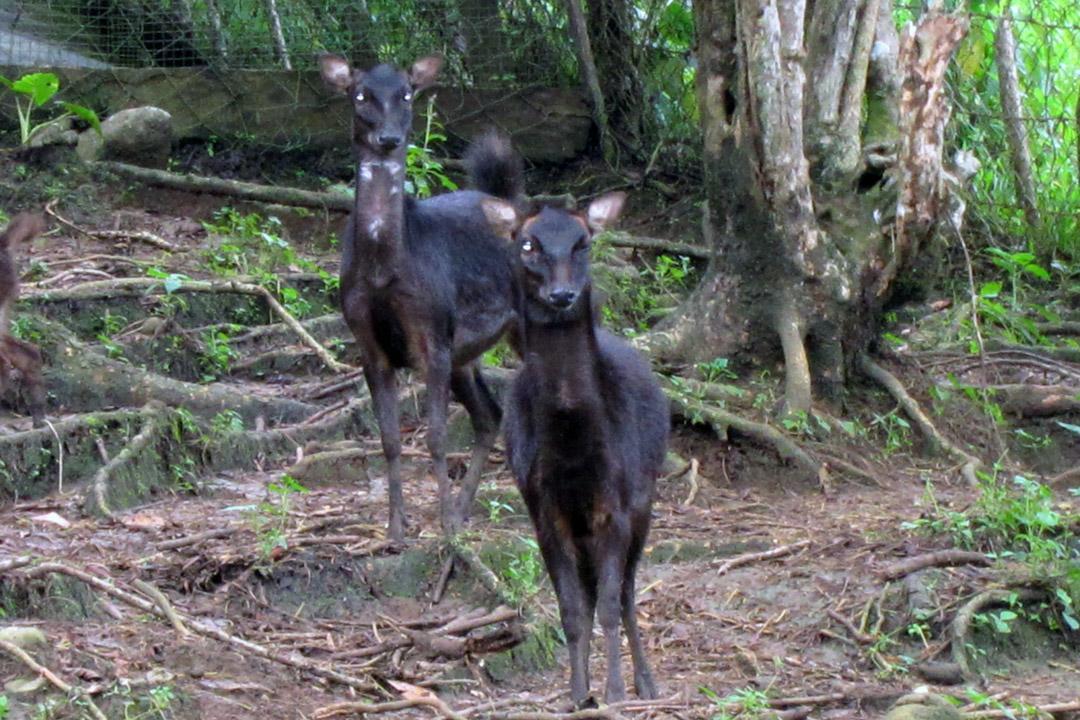
The Philippine deer (Rusa marianna), also known as the Philippine sambar or the Philippine Brown Deer, is a species of deer native to the forests and grasslands on most larger islands of the Philippines. The only major islands where it is not distributed are Negros, Panay, Palawan, Sulu, and the Babuyan and Batanes island groups. It is classified as Vulnerable by the IUCN due to its increasingly fragmented populations as a result of habitat loss and hunting.
The Philippine deer is a medium-sized species, but generally much smaller than its cousin, the Sambar Deer. Head-and-body length is 100 to 151 cm (39 to 59 in), shoulder height is 55 to 70 cm (22 to 28 in) and body weight is 40 to 60 kg (88 to 130 lb). It mostly even brown in color, with the exception of the underside of the tail, which is white. In Mindanao, the deer’s coat has been reported to be a pale, sandy grey color. The antlers of the male are quite small, usually having a length of 20 to 40 cm (7.9 to 16 in).


This species can be found in a variety of habitats in the Philippines. They may be distributed anywhere from wooded lowlands to forested mountain slopes and up to 2,900 m (9,500 ft) metres above sea level. Breeding seems to most commonly occur from September to January, with females giving birth to a single fawn marked with light colored spots, which disappear after a few weeks. During the rut, females may form small groups of up to eight individuals, but the males remain solitary and are aggressive. The Philippine deer is largely nocturnal, resting in dense forest thickets by day. They generally congregate around natural forest openings, eating grasses, leaves, fallen fruit and berries there.
The Philippine deer was introduced to Guam by the Spanish governor Mariano Tobias between 1770 and 1774 as a game species. Although scarce in its native range in the Philippines, it is overpopulated in many areas of Guam, posing serious threats to plant communities by overgrazing. It was also introduced to Rota, Saipan, and Pohnpei but those populations did not take hold like they did in Guam.










